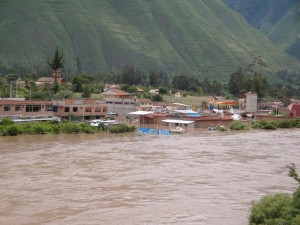Now we’re getting so much more snow in Britain, perhaps it’s time to stop complaining about the disruption to travel and work, and start appreciating what it brings.
A woodpecker came by this morning picking at the grains of food I’d left out for the birds in my small copse. Against the white of the snow, I have never seen its colours looking so brilliant – or appreciated quite how many different colours go into a green woodpecker’s coat: the green shading into yellow across its back, the red head with its ruffled blue and black. And tiny birds like wrens which can get lost in the undergrowth suddenly stood out as well: is there anything that draws the attention as much as the attentive way a wren cocks its head? Even the rabbits, which normally I view as either dull or pests, have an exaggeration to their movements, an extra kick to their hind legs, in their delineation against the snow.
The lower woods and copses of the Chilterns are scattered across the valley I look out on, and the snow exaggerates the distance between them, giving the landscape an open, Scandinavian feel that was liberating.
Along the river meadows by the Thames, a flock of no less than 75 Canadian geese, surprised to see a walker, took off all at once making a noise like snow from a distant avalanche. The tracks they had left on the frozen water meadows were very beautiful – a tapestry of fine webbed footprints. And elsewhere the tracking reminds me of my passion as a child for those shoes Clarks made which left animal footprints behind.
Travelling down from Scotland along the East Coast line recently, I was struck by the hard beauty of the Northumbrian coastline under snow: the breakers lashing towards the high-plateaued farmhouses with their caravans to one side for the overflow of families or labourers; deer crossing a snow-furrowed field; a scarecrow wearing a Superman costume, so bright that the red of his cape stood out like Kryptonite. And later, in the distance, the Cleveland Hills which I had walked in the summer, looking far finer and more impressive now.
Even down into the soft contours of Gloucestershire, the mistletoe bunched up in the blackly inked trees and the low, late sun coming over the Malvern Hills carved long shadows – more Japanese than traditional English pastoral.
What a country! It makes me want to go out and explore it all over again – prompted by John Steinbeck, whose Travels with Charlie I’ve just finished: written almost exactly 50 years ago towards the end of his life, and a fine meditation on the way America had changed in some ways, but not in others.


 He was describing his recent work at a site called Huaca el Pueblo, where they uncovered a tomb dating from around 300 to 500 AD. Inside were the remains of four individuals, two men and two women, all in their twenties at the time of death. Working at frantic speed over the space of five weeks to beat the threat from both the humidity and local looters, his team of archaeologists injected alcohol under the mask of ‘the highest status individual’ – who Bourget has called ‘the Lord of Ucupe’ – to loosen it up for removal from his face in the normal way. They then used thin slivers of bamboo to lift it, only to discover another mask underneath, like a Russian doll.
He was describing his recent work at a site called Huaca el Pueblo, where they uncovered a tomb dating from around 300 to 500 AD. Inside were the remains of four individuals, two men and two women, all in their twenties at the time of death. Working at frantic speed over the space of five weeks to beat the threat from both the humidity and local looters, his team of archaeologists injected alcohol under the mask of ‘the highest status individual’ – who Bourget has called ‘the Lord of Ucupe’ – to loosen it up for removal from his face in the normal way. They then used thin slivers of bamboo to lift it, only to discover another mask underneath, like a Russian doll.